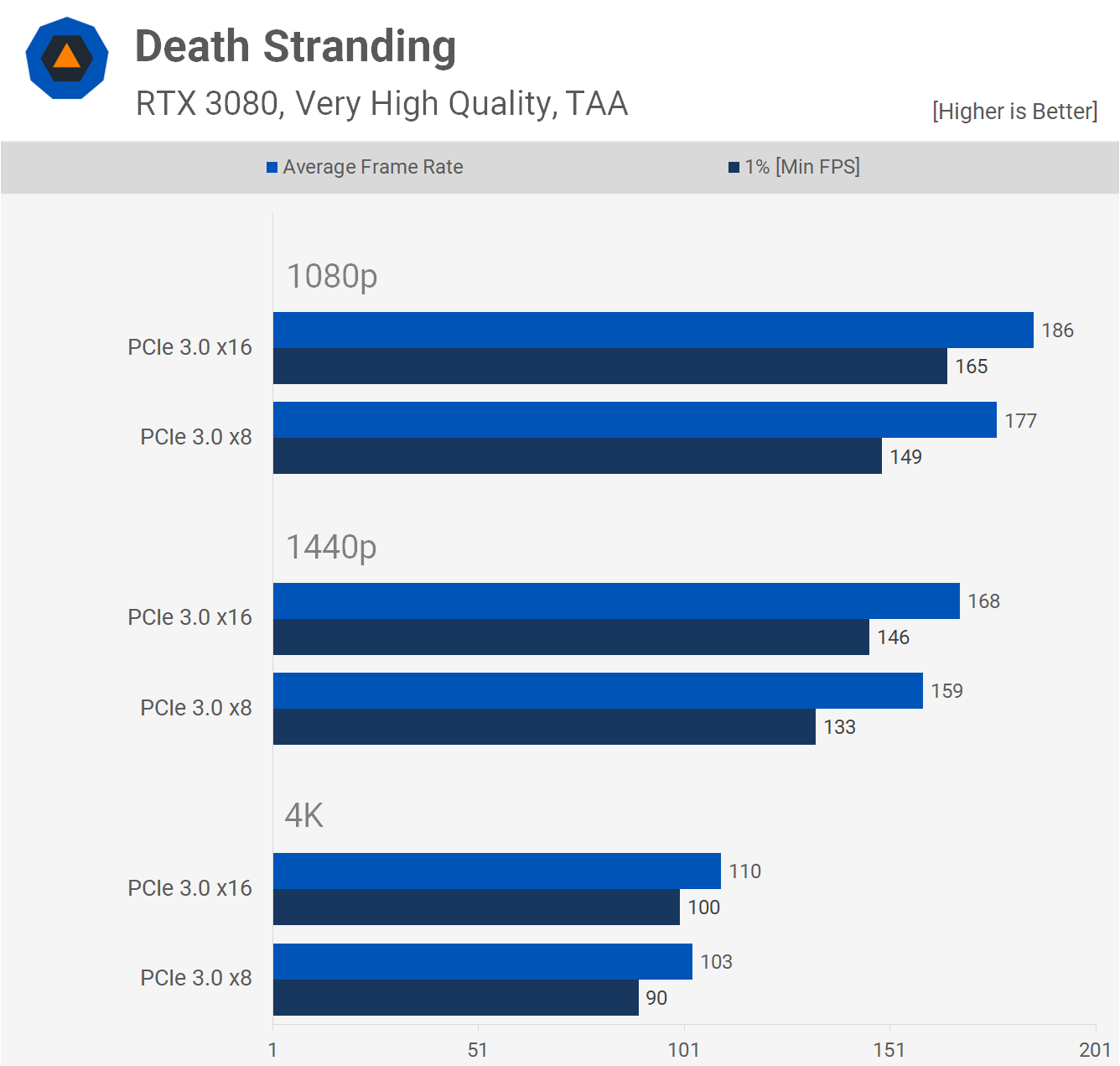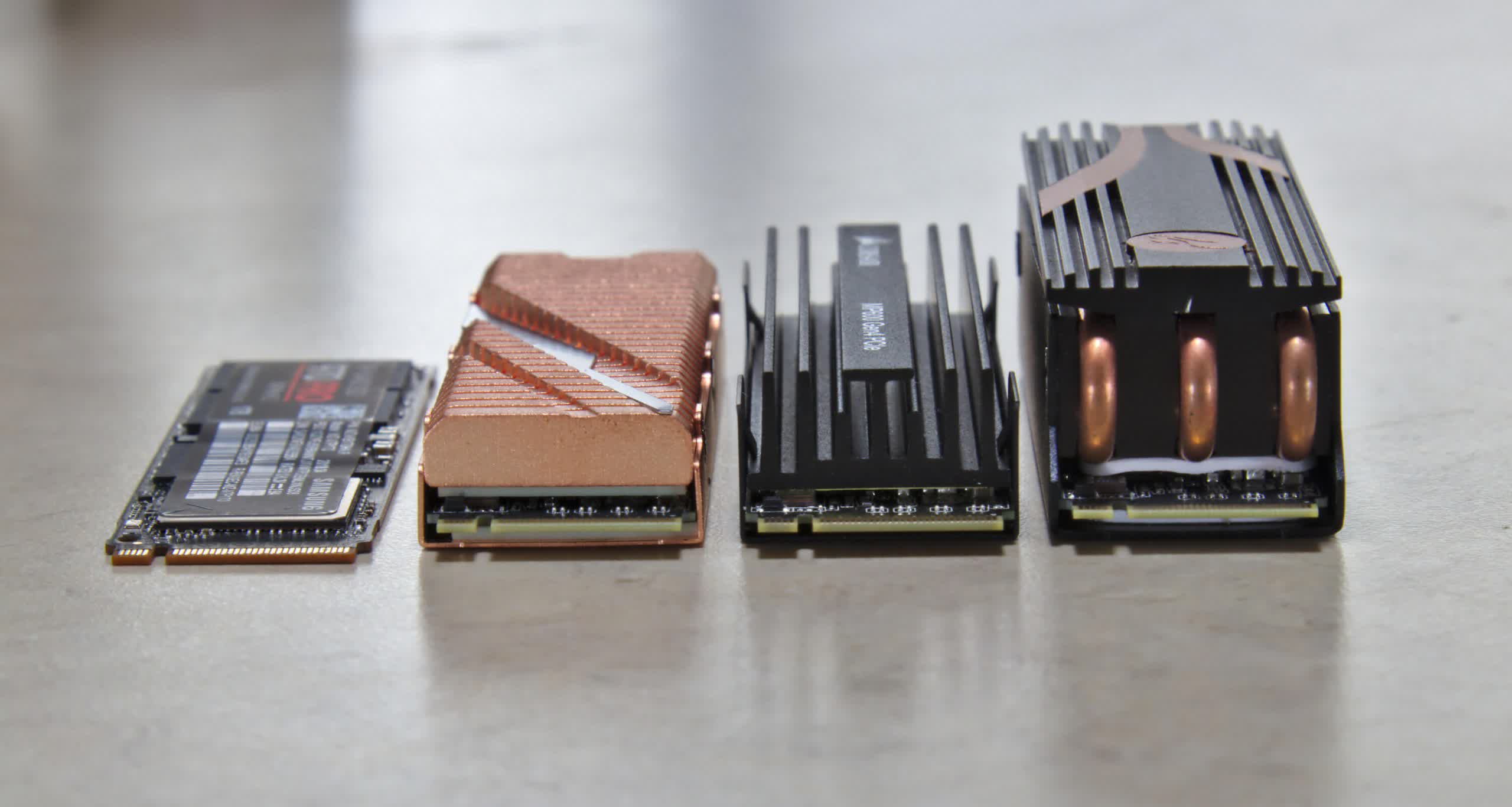PCIe 4.0 vs. PCIe 3.0 GPU Benchmark - capratheap1957
New we've been discussing PCI Express 4.0 and the role it plays with the new GeForce 30 series. We suspected in that respect may be a small performance advantage with high-closing parts such American Samoa the RTX 3080 and 3090 when using PCIe 4.0 complete 3.0, something like a ~5% uplift. We took a very short consider this in our day one review and recovered at the most we were look sportsmanlike a 3% lift up, which honestly adds up to very petty.
Still we had deep-laid to take a more in-depth calculate at PCIe performance with the RTX 3080, so that's what we're going to set today. We'll be looking at many different PCI Express configurations using the Ryzen 9 3950X on the X570 platform using MSI's X570 Unify motherboard, as well as the Intel Core i9-10900K on the Z490 platform using MSI's Z490 Unify. In both instances we're using 32GB of DDR4-3200 CL14 memory and the nontextual matter wag of choice is the RTX 3080 Founders Edition.

For all practical purposes, we'll pass over the talk about the PCI Express autobus, the bandwidth available at each fashion Beaver State anything of the sort since we've gone over that previously, we'll assume you already screw the details and we're mostly related to about the numbers, then let's get to it.
Ryzen 9 3950X PCI 3.0 vs PCIe 4.0 Benchmarks
Starting with Death Stranding we see no real difference in performance 'tween PCIe 4.0 and 3.0 when running at full bandwidth in the x16 mode. In the unlikely scenario that you're running at PCIe 3.0 x8 on an X570 or B550 motherboard, there is a performance hit, particularly to the 1% low functioning, where we see up to an 11% drop in frame grade at 1440p, though typically we're looking at more like a 7% dip in execution.

Despite existence a very visually impressive game, Shadow of the Grave Raider doesn't eat up a great deal of PCIe bandwidth and as a result we see virtually no change in performance, even up when leaving from PCIe 3.0 x8 bandwidth ripe up to PCIe 4.0 x16 bandwidth.


It's a quasi story when testing with Rainbow Six Siege, we see an insignificant 2.5% performance drop hit at 1080p when changing PCIe version from 4.0 to 3.0, and then a further 2% cast off when switching to x8 bandwidth. Really nothing to see here.

F1 2020 is yet some other title that International Relations and Security Network't noticeably wedged by PCI Express bandwidth and it's not until we drop to PCIe 3.0 x8 that we see some kinda performance loss at 1440p and 4K. Interestingly, it is again 1440p that takes the biggest arrive at, but we're only talking a 6% leave out murder for this unlikely shape.

Apparent horizon Zero Sink in has proven to atomic number 4 more PCIe sensitive than most new titles we've tested, but even present we're sighted really little divergence between PCIe 3.0 and 4.0. In fact, we only if start to insure a reduction in framework charge per unit with PCIe 3.0 x8.

We do it that Resident Evil 3 isn't CPU sensitive at all, at to the lowest degree within reason and it doesn't come along very PCIe bandwidth sensitive either. We see virtually no difference 'tween PCIe 3.0 and 4.0.

The Doom Eternal results are riveting because we're pushing really high form rates in this statute title. You'll often see the biggest performance differences at higher frame rates and this is because jitney transfers are fairly consistent per couc regardless of resolution, meaning the systema skeletale rate is the primary election number one wood of PCIe bandwidth.
The threshold for PCIe 3.0 x8 in this title appears to cost just over 300 Federal Protective Service, piece x16 will take into account for most 360 fps and PCIe 4.0 x16 doesn't limit the 3950X, allowing for 368 fps on average.

Wolfenstein: Youngblood behaves similarly to Fate, so while we are seeing a reduction in performance with PCIe 3.0 x16, the margins are meaningless.

For those wondering, enabling a technology like DLSS doesn't change much, we're looking at same margins to that of native performance.

We've also seen people call ray tracing uses a lot more PCI Evince bandwidth... we'Ra not dependable what that's based on, but Here are the DLSS + ray tracing numbers. If anything this reduces the motive for PCIe bandwidth as information technology lowers the frame plac.
Intel Heart i9-10900K PCI 3.0 vs PCIe 4.0 Benchmarks
Now here's a quick consider how the RTX 3080 performs on the Z490/10900K combo exploitation PCI Express 3.0 x16 and x8 bandwidth. Here we're looking a 5% diminution in average frame rate at 1080p with a 10% simplification in 1% low functioning.

Symmetric at 4K we're seeing a 6% drop in intermediate soma rate with a 10% drop for the 1% low operation, then that's quite significant and is a applicable statistic for some users, which I'll get to concisely.

As we power saw previously with the Darkness of the Tomb Raider, this title doesn't take a good deal of PCIe bandwidth and we check over again there's at most a 5% drop in functioning when halving the PCIe 3.0 bandwidth.

Rainbow Six Siege PCIe bandwidth doesn't matter here, especially when gaming at 1440p and 4K.

There is a small performance penalty from halving the available PCIe bandwidth from PCIe 3.0 x16 to x8, up to a 6% decrease at 1080p, 5% at 1440p and nothing at 4K.

We're seeing similar performance margins in Horizon Zero in Fall into place, Here the reduction in PCIe 3.0 bandwidth reduced public presentation by up to 5% at 1080p and 4% at 1440p with no change to the 4K data.

We see a 5% drop in performance at 1080p in Resident Evil 3 with no noteworthy shift at 1440p and 4K.

Interesting results in Doom Eternal once again. With the 3950X we recovered before that PCIe 3.0 x8 bandwidth limits the RTX 3080 to around 320 fps at 1080p and we see the same with the 10900K. As a result, we're look a massive 18% step-dow in performance at 1080p, but little change to the 1440p and 4K data.
PCIe Device Discussion
Admittedly much of that data wasn't terribly stunning, but it's good to double-check it anyway. Nowadays there is one more set of results we'd wish to look up to at and this is something that often gets unmarked in these graphics batting order PCI Express tests. The PCIe 3.0 x8 data for the AMD system is somewhat pointless to expect at, it was impartial cooked in the name of science, though IT power be useful information for those using a 300 or 400 serial publication motherboard with multiple PCIe devices.
This information is a band more relevant to Intel users, as there's no way to avoid PCIe 3.0 x8 bandwidth for your primary PCIe slot if you ever wish to use the secondary slot. We realize a peck of people leave the minute PCIe x16 slot vacant, so this is not something that affects everyone, or even the absolute majority of Intel users. To find unsuccessful just how many of you run a second operating theater even a third PCIe device, we ran a pollard.

The large bulk of hoi polloi install a graphics card in their system and that's it -- no other elaboration slots induce used. Nigh a quarter of users aforesaid they do install a irregular twist, whether that be a sound card, extra storage, catch card, high speed up networking or any other expansion calling card. Information technology could be a PCIe card with a single USB port for all that matters, but if it's installed in the secondary PCIe x16 time slot it will half the bandwidth of the primary slot, forcing you to run at PCI 3.0 x8 on a flagship Z490 motherboard, for lesson.
If you do this on a B550 or X570 board you'll be limited to PCIe 4.0 x8 bandwidth when exploitation the RTX 3080 and that limits you to PCIe 3.0 x16 bandwidth, so there's no performance hit there. As we righteous said, this isn't something virtually should be concerned more or less and we don't want to create an unrealistic scenario to bound performance connected Intel systems, but we leave simply show you what does happen in that scenario, for the smaller dower of users that coiffe occupy that second PCIe slot.

Protrusive with Death Stranding, when running both CPUs in a x8 by x8 configuration for the primary election and secondary PCIe slots, we see comparable performance along some platforms with slightly better 1% lows for the 3950X. Past at 4K the 3950X pulled beforehand aside a 3% margin, a meaningless difference though information technology was consistently a hardly a frames faster under these conditions.

AMD already had a small performance advantage in Shadow of the Tomb Raider, so limiting the 10900K past using PCIe 3.0 x8 allows the 3950X to deport 6% more carrying out at 1440p and 5% more at 4K.

Intel enjoys a performance advantage in Uncle Tom Clancy's Rainbow Six Military blockade when using the x16 manner and that advantage isn't entirely eroded with the more express x8 bandwidth. The 10900K silent allows for 8% more frames at 1080p and 3% Sir Thomas More at 1440p, and so the small performance hit the 10900K adage when going from x16 to x8 bandwidth isn't a big cope here.

Previously the 10900K was 13% faster than the 3950X in F1 2020 at 1080p and here we're only look a very minor change thereto margin, reducing it to 11%. The margin is entirely eliminated at 1440p and 4K.

Due to a harsh CPU bottleneck at 1080p in Horizon Zero Dawn with the Ryzen 9 3950X, reducing the PCIe bandwidth of the 10900K still sees it deliver 13% many performance, whereas at full x16 bandwidth it was 19% quicker. That said we are seeing identical performance at 1440p and 4K.

The Resident Sinister 3 results don't change Here because the game doesn't see a reduction in execution with PCIe 3.0 x18 bandwidth and it also sees the same dismantle of performance using either the 3950X or 10900K.

The Doom Eternal results are interesting, leastways the 1080p data is. Unrestricted by PCIe bandwidth we've seen previously that the 10900K is 6% faster than the 3950X at 1080p with the RTX 3080, withal with a second PCIe twist installed information technology's now 10% slower, handing AMD the win. Functioning is identical at 1440p and 4K as ahead.
What We Learned
In a nutshell, right now PCIe 4.0 does little to improve performance with the RTX 3080. It's possible that could change with future games, just for now it's a non-issue.
The data we ran when using the secondary PCIe x16 slot is gripping, even if only a portion of users will be doing soh, at last, information technology's not something AMD fans can manipulation as a weapon system to win super important arguments on forums or Reddit. This ISN't a configuration just about mass utilisation and the decrease in execution isn't very noticeable.
Seen from another view, AMD fans can't have IT both ways. Single-digit margins can't be world-shattering when they favor your pet ironware stigmatise. IT's even questionable as to how relevant the 11% win the 3950X enjoyed in Doom Aeonian at 1080p is, Eastern Samoa we're talking approximately 321 fps vs 357 fps.

If you wish to take engorged reward of the expansion options your PC offers, you're world-class off doing so with a platform supporting PCI Express 4.0 to avoid any bandwidth bottlenecks. Also, American Samoa we checked away a hardly a months ago, PCIe 4.0 allows for the latest and superior SSDs achieve amazing untoasted speeds and the second generation of those drives are set to arrive by the end of the class.
Shopping Shortcuts:
- Nvidia GeForce RTX 3080 on Amazon River
- AMD Ryzen 9 3950X on Amazon
- AMD Ryzen 9 3900X on Amazon
- MSI X570 Unify motherboard on Amazon
- Intel Core i9-10900K on Amazon
- MSI Z490 Unify motherboard happening Amazon
Source: https://www.techspot.com/review/2104-pcie4-vs-pcie3-gpu-performance/
Posted by: capratheap1957.blogspot.com


0 Response to "PCIe 4.0 vs. PCIe 3.0 GPU Benchmark - capratheap1957"
Post a Comment